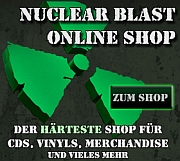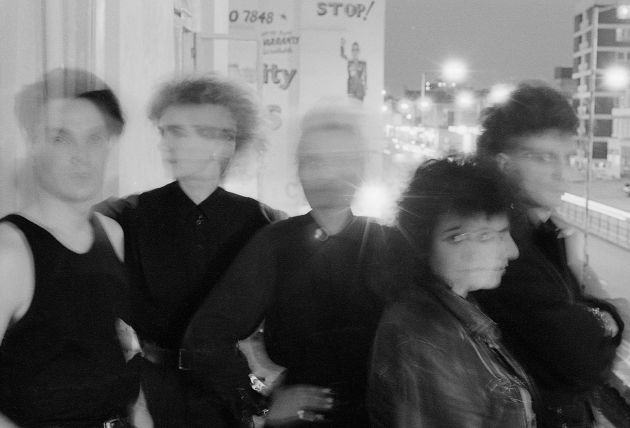 Interview with
Interview with Anja Huwe (XMal Deutschland)
It’s a snowy afternoon on March 13th as I meet Anja Huwe over Zoom, catching her in between various engagements. We have only half an hour, but as the conversation unfolds, it becomes clear that this brief window will take us on a fascinating journey - one that bridges the past and future of her artistry, spanning both music and visual expression.
Anja Huwe, renowned as the enigmatic voice of XMAL DEUTSCHLAND, made a stunning return to music with her first-ever solo album, ‘Codes’. A deeply personal and sonically intense record, ‘Codes’ was born out of an unexpected creative impulse during the pandemic, weaving together themes of history, loss, and transformation. Now, alongside her solo work, she is also revisiting XMAL DEUTSCHLAND’s early years with the upcoming release of ‘Gift: The 4AD Years’.
Set for release on May 9th, ‘Gift’ is a highly anticipated 3xLP box set that commemorates XMAL DEUTSCHLAND’s influential years on the 4AD label (1983-1984). Featuring newly remastered editions of their seminal albums ‘Fetisch’ and ‘Tocsin’, along with tracks from the ‘Incubus Succubus II’ and ‘Qual’ EPs, this collection reintroduces the band’s striking and uncompromising sound to both longtime fans and a new generation. The package includes remastered audio from Abbey Road Studios, original artwork redesigned by Timothy O’Donnell, and a photo booklet featuring images by Kevin Cummins, Paul Slattery, Sheila Rock, and more.
For many, XMAL DEUTSCHLAND was a defining force in post-punk and an uncompromising presence in the gothic and alternative music scenes of the 1980s. Their staccato rhythms, stark yet immersive soundscapes, and Anja’s commanding presence left an indelible mark, resonating across cultures despite their lyrics being sung entirely in German. Now, with ‘Gift’, the mythos of XMAL DEUTSCHLAND continues to evolve, bridging the past with the present. In this conversation, Anja reflects on her return to music, the emotional depths of Codes, and the impact of XMAL DEUTSCHLAND’s legacy. She speaks candidly about her creative process, the shifting dynamics of live performances, and the unbreakable connection between her visual art and music. What unfolds is a compelling insight into an artist who, even after decades, refuses to stand still.
Reflections of Darkness [RoD]: I’d like to begin with both your music and your art. Your work has been described as “music on canvas,” and I personally really like this term, where colours and textures evoke melodies and rhythms. Do you see sound and visual art as two sides of the same creative impulse, or do they require a different emotional approach? Does your code of colour function as a personal language connected to your musical past? How do the visual and sonic aspects of your art connect? Do you see a link between them?
Anja: Yes, of course. That’s why I say I paint music. I have a connection to music, and that was always there. This is called synaesthesia, which is quite common among various artists. I always thought I was very strange, saying, “Let’s sing and play the red song and the blue song,” and people wondered what I was talking about. At some point, I realized that painting these dots and colours was my new kind of music. It has always been there, but for now, it’s sort of sleeping while I focus on music again. But it will be back, definitely.
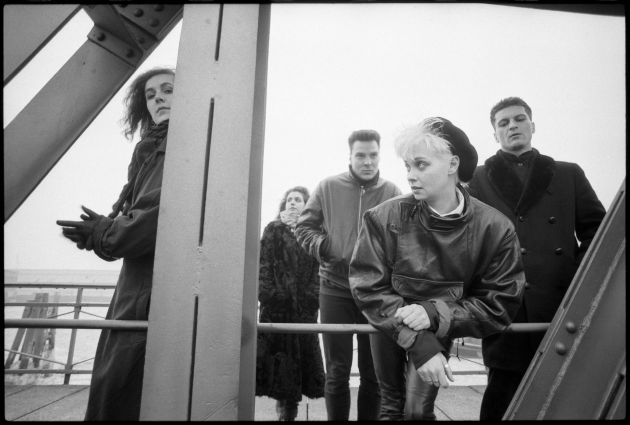
RoD: After years in visual art, what was it like returning to music? Did drawing inspiration from Moshe Shnitzki’s diary bring a different emotional weight? Your work has always carried intense emotion - how did you channel fear, beauty, pain, and hope into the album?
Anja: Well, first of all, I went back into music by accident. My friend Mona, a musician and producer, always asked me, “Why don’t you sing anymore?” She said, “You should go back to music.” I said, “No, I have my art, and that’s okay. I’ve been in the music business for a long time, and I don’t like the business. I don’t have to sing.” Then, when COVID came, I had various requests from all over the world, but I kept saying no. Then a guy from Tel Aviv, Schwartz, reached out. He said, “We have this basic track, written by a guy from Norway - Doom Metal. No one knows him personally.” That track was ‘Scuba Nas’, the first one. They asked me to sing on it, and I still said no. But Schwartz kept insisting, sending the track, saying, “Just try it.” Then during COVID, with nothing going on - no painting, no gym - I just sang into my phone and sent it to Mona. That was the beginning of the story. Later, I went to Berlin to record it properly. Mona told me it sounded really good and that we should give it a try, and if I didn’t like it, I could forget about it. While working on the track and talking to Yeshai from Tel Aviv, we started discussing family history. His family was from the Belarusian area, which is now Ukraine. He read from his grandfather’s diary, and it was fascinating. Then Tel Aviv got bombed, and then the war in Ukraine happened. I read many books about the whole region and what happened there. I told Mona, “You know what? We should really think about putting an album together - not based on everything, but taking bits of it. I want to write my own words and lyrics and music, and maybe we’ll create something from this because it’s so heartbreaking to hear these stories.”
I was thinking about what it does to someone to disappear into the woods, knowing their family will be killed, knowing they will have to live with the partisans. Many people went through this, and I did a lot of research about it. It was so intense that I thought, “Let’s give it a try.” And we did. At some point, I said, “This will be an album.” And that’s how it all started. We brought people in. I told Mona, “I want Manuela to play guitar, otherwise I won’t do this because I love the way she plays.” So it all came together like bits and pieces, and here we are now. This album came out without any expectations. Even my label said, “Well, a solo album - who needs a solo album?” But then, out of nowhere, the album came out, and the first XMAL DEUTSCHLAND singles were released, and everything just exploded. It was amazing.
RoD: So I have this feeling that this impulse to create - on the one hand, it was COVID, yes, but the geopolitical situation actually gave you a push to speak on this. Do you think that art and music should tell particular stories, like those of people who suffered, to present their version of history? Because I know that your art is also a celebration of things you love - space, nature, solitude. How do you combine these topics, and what do you think art should be about? Or both of these themes, so to say?
Anja: Well, I think the way I paint with these dots and colours - that is fractal structures. That’s what it’s all about. Dots are everywhere, in pictures, in the sky, in everything. It’s a very natural way of getting things across. And the interesting thing is, when people stand in front of my works, they understand them, they touch them. Circles, for example - the philosophy behind them is really interesting. In Japanese culture, for example, circles are everywhere, even on their flag. The philosophy is fascinating. Colours too - kids touch my paintings, follow the structures, and say, “I can see it.” I don’t want to give a message to anyone, but people understand even just colour. Green, for example, is always something people love. Red, however, is always seen as aggressive. So, yes, maybe you can communicate something through art, but the question is: do you really want to? Sometimes, emotions come across more strongly through sound. That was the main thing with ‘Codes’ - bringing things across through aggressive, doomy sounds so people can feel it, just like with my paintings.
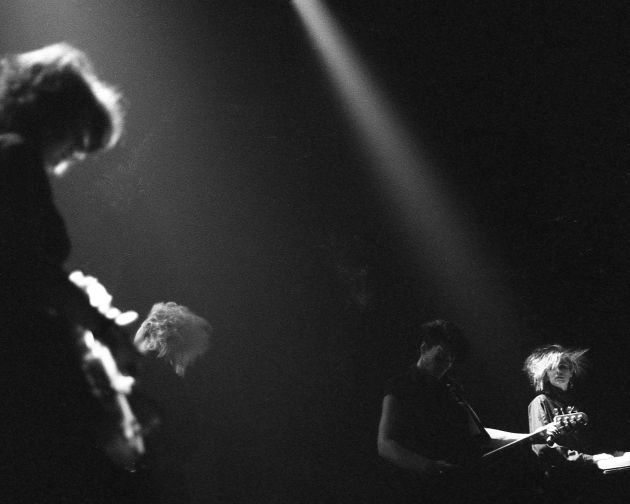
RoD: Okay, and what about ‘Gift: The 4AD Years’? The new release is reaching both longtime fans and a new generation. Listening back, what do you feel these recordings capture about that era? Do you hear them differently now? Has revisiting this time influenced how you see your own artistic evolution, especially after releasing Codes? How do you feel about that release?
Anja: Well, it is interesting because I always said I would never play live again. I said, “No, live is not really...” I wanted to create this piece of art, let’s say a piece of art for ‘Codes’. And then, at some point, I came to the conclusion that, yeah, I should give it a try to maybe get back into playing live. But we decided we didn’t have too many tracks, so we thought, why not go back to the XMAL DEUTSCHLAND tracks, give them a retouch, and add a bit more of an electronic sound? And why I’m saying this - this was the first time I really listened to my old tracks again. I heard how we wrote them and how simple they are. It was pretty shocking to me because I saw what people see in the songs for the very first time after ages, and that was amazing. We played some of these in The Hague and Paris, and people loved them. They could feel and see what we did with them, and they were singing along - something people never did before. It was amazing. And this box set with these old records - these haven’t been out for decades, and this is the very first time. So I’m very happy that they are here, because it is my past. And it’s great to have it in a box, you know. ‘Gift’ - in German, it means poison. It’s a double meaning. In English, it means present, but in German, it means poison. That’s why we called it that. Because it is really like a little treasure box, but with a twist. And I’ve been thinking - because you also mentioned the past - that people, for the first time, were singing my songs.
RoD: And I’m wondering, because XMAL DEUTSCHLAND has become a defining force in European Post-Punk, what do you think made the band resonate so powerfully across cultures? How did working with 4AD and Vaughan Oliver’s 23 Envelope shape your artistic identity? And how do you feel post-punk of the ‘80s differs from the current Post-Punk movement? Do you see differences, similarities, or has the dynamic shifted?
Anja: Well, lots of questions. First of all, I see that there is a huge community out there that really considers XMAL DEUTSCHLAND important. I experience this all the time - people say the band meant so much to them. There’s a huge community that says, “This band, these girls, made me go into music.” It’s a huge scene, and a very young scene too, especially in the US and here in Europe. It’s pretty amazing. But I think there’s also a reason for that - we disappeared at some point. We split up, and that was it. It wasn’t a big thing. We just disappeared, and then we were gone. At that time, the internet was developing, and the buzz kept growing, bigger and bigger. At some point, someone said, “You’re a cult band.” I was like, “What? What do you mean?” And it just kept growing. When I did these live performances in The Hague and Paris, it became very obvious. There were lots of people, and some of them were crying. That was new to me. The reaction was so overwhelmingly positive. They were so thankful. I was really, really impressed. We’re doing more gigs, as you know, and it will be interesting to see where this goes.
RoD: Do you feel like people react differently now compared to before? Are they more engaged, more lively?
Anja: I think the difference is that back in the day, it was a completely different time. People would go to gigs and just stand there, watching. No reaction at all. We did the same - we never talked on stage. Never. No way. Just “Hi” and “Bye.” But these days, it’s different. People react. Everyone has a smartphone, everything is online, and everyone is communicating. They sing along, they applaud, they throw hearts and stuff. They are so happy to have you back on stage. I mean, I only had two gigs, but when I went home afterward, I got ill. I was sick for two weeks because I just couldn’t handle it. It was too much - so emotional. I never expected that. The emotion came across so strongly. I had never experienced anything like that before - never, ever. I can’t even find words for it. It was amazing.
RoD: You’ve lived and worked in places like London, New York, Berlin, and Hamburg. How have these different cultural environments shaped your creative vision? Do the echoes of those places find their way to your music?
Anja: Yeah, of course. Every city is different. When you live there, it influences you. Definitely. Even when you go to the Baltic Sea, you get a completely different light, and that does something to you. Hamburg has always been home. I always had my apartment here, and I feel very safe. I can work here, and I don’t have to meet anyone except friends if I want to. But in a city like New York, you have to communicate. You have to go out. You can’t just sit in your place. You go to exhibitions, you see people. The whole dynamic is different. Even just walking down the streets, you discover things, take photos, and take in the constant input. London is different - another big city with its own energy. Berlin is different again. But every city gives you something that you absorb into your art. I like big cities because of the anonymity. I can just watch things, observe. That inspires me. It’s very difficult to remain noticed, right? But it does something to you. And it’s not just about painting or writing music - it’s about everything you read and the things that inspire you to explore new ideas. For example, right now I’m editing a video for a mash-up I did from ‘Codes’ and ‘Deutschland’. So many things came up during that process - traveling, taking photos, incorporating dance performances. I’m constantly inspired by things, not just in art but in everything.
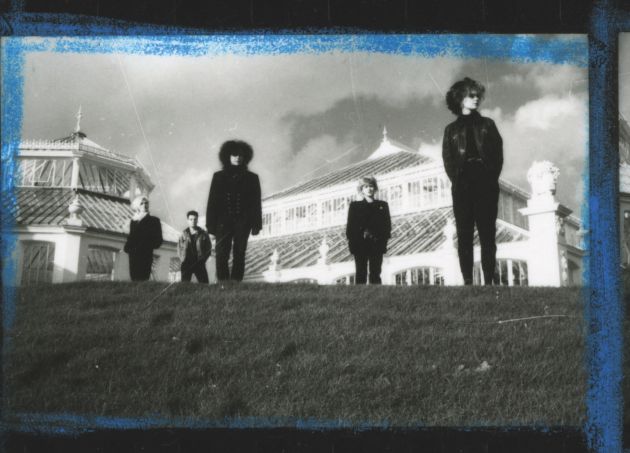
RoD: We already mentioned Mona Mur earlier in our conversation, so I wanted to ask - whether collaborating with musicians like her or working alone in your studio, how does your artistic process shift? Do you approach collaboration differently in music versus visual art? How do these collaborations influence your work as an artist and musician?
Anja: You mean working with others? Well, yeah. Working with a full band, which I did ages ago, is completely different from how I work now. Back then, I was always the last one to add my part - first came the drums, then bass, then guitar, keyboards, and finally, my vocals. These days, it’s different. Working with Mona is completely different. She has a studio, she has her sounds and ideas, and I have mine, and we just bring them together. I’ll tell her, “I’ve written these words,” and she’ll ask, “What do you hear?” And I’ll say, “I hear a trip-hop sound, very drum-based, with this and that.” And she’ll go, “Oh, okay, I see. How about this?” So we build it together as a duo. For example, I told her, “I need Manuela’s guitar on every track because I love the way she plays.” Her playing is very unique. So we bring in other people like Manuela. These days, it’s easy - you send things electronically, they record, send it back to the studio. The way we work together is very easy and very positive. We share the same kind of ideas. I’m more focused on the lyrical and sound aspects - I work with guitars like they’re paintings, like colours, bringing the emotional textures. She’s more into the technical aspects, which I’m not interested in at all. I hear things, I imagine sounds, and she makes them real.
RoD: To close up our interview - your career has never been static. Whether it’s music, painting, or visual arts, you’ve continuously reinvented yourself. What compels you to keep exploring new creative forms? And after ‘Codes’ and ‘Gift’, is there another artistic frontier you’re excited to explore, or is it all about new music now?
Anja: Yeah. The thing is, I’ve never really looked back. I’m not the kind of person who says, “Oh, this is my legacy,” and then stops working. I constantly develop new things. We have plans - I think we will start writing again, new music, new songs. I’d love to do that because I really enjoy it. I have lots of lyrics I want to bring to life. But I will also have exhibitions again. We will play live, of course, at various concerts. But maybe... I don’t know. I have so many photos and so many memories, things that no one really knows. My friends know what I’ve been through, what’s happened to me, and the people I’ve met. Maybe I should, as my father always said, “Put it down on paper.” He always told me that writing things down is important, especially when you’ve been through difficult things - like illnesses, personal challenges. He always said it would do something to me, help in some way. And I always said, “No, never.” But now, I think I’m reaching a point where I really want to do it. I’ve started writing little notes. “I was here, I did this, I experienced that.” It’s quite a lot. Maybe I will do it at some point, but in a different way - not like everyone else does. Maybe I’ll do it with pictures, photos, art - something unique.
RoD: I would definitely love to read that. To dive into that world, to see your experiences through your eyes, would be super exciting. And I know we will meet at least once at Castle Party, so I’m really looking forward to that. Hopefully, there will be more occasions. Wishing you all the best. Until we meet very soon, hopefully.
Anja: Yeah, see you soon. Thank you.
The interview took place on 13th March 2025
Pictures by Mick Mercer, Kevin Cummins and Chris Graham




